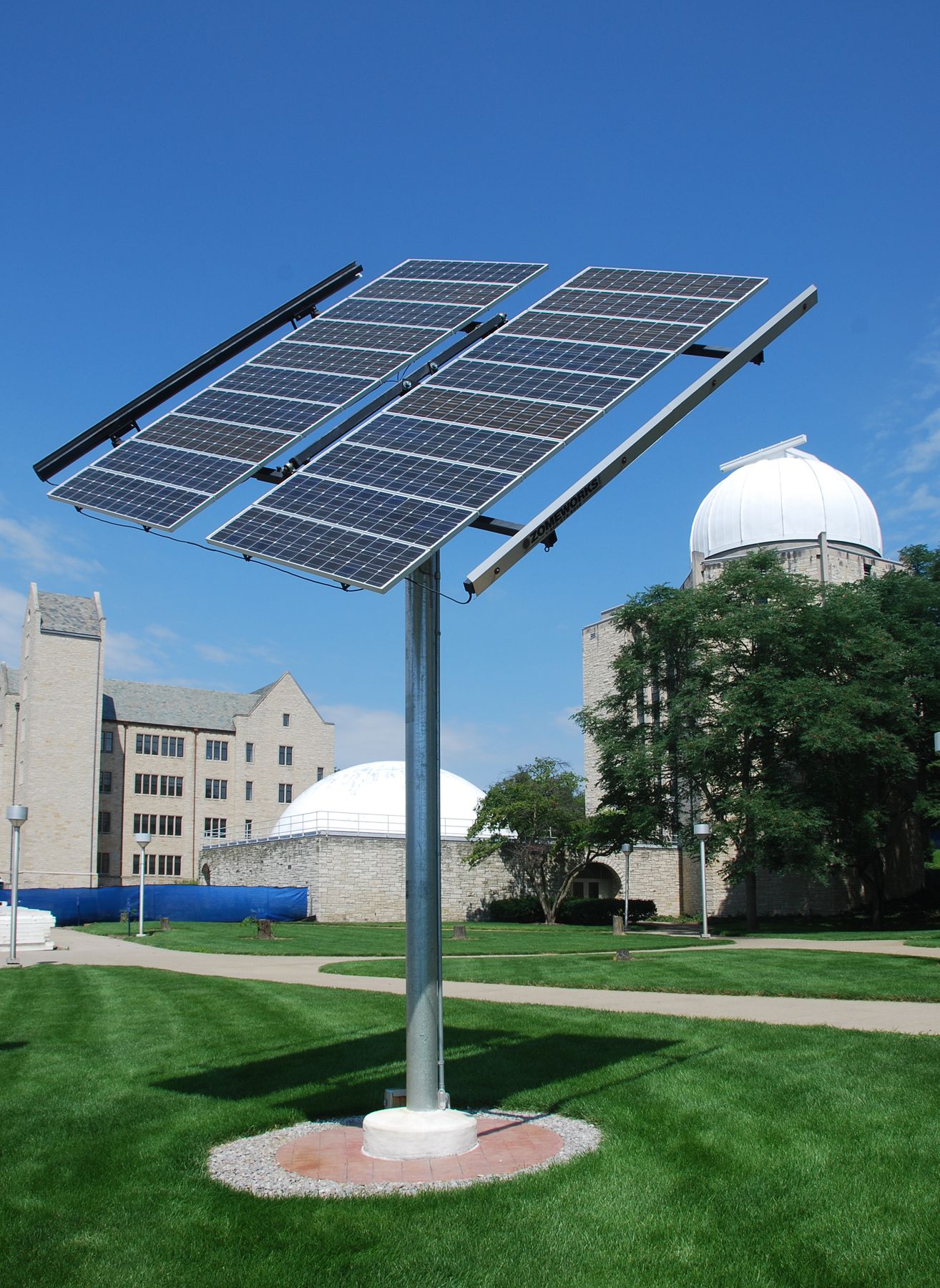Integrated facilities management offers universities ways to save, build and remain competitive

Eric Conrad has worked in facilities and operations management for 30 years, including stints at two of the nation's largest universities. Today he is Executive Vice President for JLL’s Education Division, and is currently working with a prestigious college that is trying to update facilities that “have seen years of deferred maintenance.”
“The first phase,” he explains, “was figuring out what they’re doing right and what they’re doing wrong.” Among the latter: not using an adequate computerized maintenance management system (CMMS). He likens this to operating an airport without an air traffic control system. But even this was just a symptom of a larger problem, a lack of information and an integrated facilities management (IFM) plan. An integrated approach to facilities management provides the data necessary to make informed near- and long-term decisions; helps the institution save money; and improves the student experience.
“You need to look at all the steps. How does the student get from the street to their dorm? Where are they parking? Does it feel safe and well-lit there? In the dorm, do the elevators work? Are the windows clean? Where are they eating? Is it clean and well-maintained? The student experience is so much more than sitting in the classroom and going to events on campus. You need to consider every part of the student experience. Facilities must be maintained properly to provide safety, cleanliness and creature comforts to beckon students—and ultimately their tuition dollars to campus.”
Students’ touchpoints are just part of what IFM takes into account. Pulling together all of the many overlapping factors is challenging, which is why many institutions are partnering with solution providers like JLL. These partnerships offer the best of both worlds: the institutional knowledge of existing facilities staff combined with the expertise, state-of-the-art tools and best practices of an industry leader.
Here are a few ways in which an IFM approach can make a difference.

Providing a strategic view


“When a university needs to save money, one of the first places they cut is facilities management services,” says De’Von Williams, Executive Director of Solutions Development for JLL’s Education and Government team. “And they often do that without understanding that as they reduce services, they increase the failure time with their equipment, which then increases their deferred maintenance, which means that down the road, you have a facility that you cannot utilize at 100 percent of capacity.”
This, Williams explains, is an example of why JLL takes a holistic approach to facilities management.
“We’re not just looking the cost to maintain a building,” he continues. “We were looking at your total cost of facilities maintenance, the total cost of your portfolio, and how all these pieces are connected.”
One of those pieces is the value of the institution’s real estate holdings. Many universities, Conrad says, have surprisingly little information about that. “When you start thinking of ~$450/foot for new construction or your Current Replacement Value (CRV), you realize your stewardship can be over hundreds of millions of dollars or even billions. Take a three million square-foot college at $450/foot, you are overseeing $1.3 Billion in facilities. Higher ed leadership needs to start viewing this through the lens of how you manage assets worth that much money to keep their value and the money they generate through tuition.”
“So we start with questions like, how many square feet do you have?” Conrad explains. “What is the value of that space? How are you using that space? The best way to save money is to get rid of space. And colleges have a really hard time with that. But if you can reduce your properties by 10 percent, not only do you get the money from those properties, but now you’ve just reduced 10 percent of your operating costs as well.”
Industry studies show that 30 to 60 percent of space on the typical campus is underutilized.
JLL’s long-term relationship with Spalding University has helped the Louisville, Kentucky-based institution expand its campus square footage by 50 percent — increasing office, laboratory, classroom, dining, and residential spaces by more than one third in the process — while simultaneously driving down costs in areas like janitorial, elevator maintenance, landscaping and painting. Spalding has even been able to increase its investment, and profile, in the surrounding community. This was made possible by the university’s embrace of a holistic approach to achieving its goals.
Improving decision-making

The university whose facilities had so much deferred maintenance is far from alone in taking an unstructured approach to data collection and analysis. Many institutions still use individual applications or a collection of spreadsheets to capture facilities information.
These methods simply cannot provide the real-time data needed for benchmarking or insights. The gold standard is computer-aided facility management (CAFM) systems and integrated workplace management systems (IWMS) to track and manage space use more efficiently and accurately. These platforms often can be integrated with other facilities or real estate systems. Data integration improves decision-making and allows for comprehensive capital planning.
“Analytics turn data into business insight,” says Williams. “But most universities are not at that point.
“A facility condition assessment (FCA) gives you an estimate of the deferred maintenance you have and allows you to put a master plan together to repair and fund these projects,” he explains. “Your CMMS collects all data on ongoing repairs, preventive maintenance tasks, and some expenditures, like labor, associated with that. So as you’re maintaining your equipment on the preventative maintenance and repair side, you should be updating your FCA so it’s a living document. If you’re increasing the lifecycle of equipment through maintenance, or it’s breaking down sooner than anticipated, that’s important information for making capital funding decisions.”
Data on building usage is also critical, Conrad adds. Tearing down an older, under-utilized building makes sense if you can manage that space better in an existing, newer facility, but often new buildings are desired and built without asking some of the really tough questions about how current space is being used.
“The biggest thing, whether you’re a chief facilities officer or facilities director, is being able to communicate to the C-suite, to the board and to the rest of the campus community about highest and best use of your campus facilities,” says Conrad. “The way you do that, quite frankly, is with data. When you have all the facts you can tell your story effectively”

Achieving, and perhaps surpassing, sustainability goals


JLL research has found that lighting accounts for 31 percent of the energy consumed in a typical college or university classroom building, and HVAC another 28 percent. These are examples of the low-hanging fruit that institutions can target to reduce their carbon footprint and save money.
But students, parents, faculty and alumni expect more.
“It goes back to the holistic approach, looking at the complete portfolio versus looking at one particular service as a commodity,” says Williams. “If you’re only looking at energy usage, you’re missing opportunities.”
JLL worked with a university that wanted to replace the power from a coal-fired power plant with electricity. But after reviewing all the data, JLL advised using a co-generation system including natural gas to create steam, because it can heat buildings and power turbines to generate electricity. That co-gen system is a more reliable and sustainable power source and now creates enough electricity to allow the campus to go off the grid every winter when demand is low.
“There’s a really negative connotation to natural gas right now in the United States,” Conrad explains. “So we focused on helping the university communicate to the students and faculty about how the co-gen system is cleaner than coal and a good long-term solution. Our approach at JLL is to use electricity, natural gas, fuel oil and water in the most efficient ways possible, not necessarily to get rid of one, because that’s not always the most sustainable solution.”
JLL also encourages renewable energy partnerships between institutions and energy providers, like the one between Duquesne University and Clearway Energy. Conrad advised a college that worked with its local electric company to build a microgrid and install solar batteries, allowing it to go off the main grid for much of the day. These kinds of partnerships can save money, create long-term revenue streams for the college and improve sustainability in the entire community.
Improving recruitment and retention

Research has shown that students rank facilities high in their considerations when choosing an institution. In an era of ever-increasing competition for enrollment, every detail of the campus experience becomes more important.
Students’ need for increased connectivity and personalization is driving change in the ways that residence halls, classrooms and gathering spaces are designed and managed. So too is their expectation of variety in the spaces where they learn and socialize. These trends are changing how professors teach. Faculty and staff need workplaces that foster innovation and collaboration.

“No one knows how much revenue colleges and universities are losing due to poor facilities,” Williams states, referring to prospective students who strike schools from their lists, enrolled students who transfer, and the resulting reputational damage from both. “I don’t know how to put a number on that. But it is definitely occurring when the condition of a university has declined.”
Integrated facilities management offers solutions.
“For at least the last 20 years, colleges and universities have looked to facilities as one of the areas to cut,” says Conrad. “At many places there are no cuts left to be made. Higher ed leadership needs to think differently about their facilities. It’s the only way forward.”
This content was paid for and created by JLL. The editorial staff of The Chronicle had no role in its preparation. Find out more about paid content.



